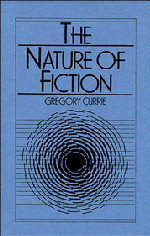Chapter 2 - THE STRUCTURE OF STORIES
Published online by Cambridge University Press: 05 November 2011
Summary
When Bleak House appeared as a book Dickens added an indignant preface defending the reality of two things depicted in the novel: the ruinous inefficiency of the Court of Chancery, and the phenomenon of spontaneous combustion. He did not, of course, claim the same for the case Jarndyce and Jarndyce, nor for the death by combustion of Krook. He was content that these things should belong to the story only. That Krook spontaneously combusted is something true in the story but for which no claim of truth is made. That such things happen from time to time is true in the story and, so Dickens assures us, true.
As it happened, Dickens was right, more or less, about the Chancery Court; wrong about spontaneous combustion. The latter phenomenon, like the Jarndyce case and Krook himself, exists in Dickens's story but not in reality. Propositions, both particular and general, can be true in a story and not true. They can be true in the story and true, as with the ruinous nature of Chancery litigation. They can be untrue in the story and true: it is untrue in the story that Charles Dickens falsely believed in spontaneous combustion, but this is, in fact, true. Being true in fiction is thus not a matter of being true in a certain place, or of a certain subject matter.
- Type
- Chapter
- Information
- The Nature of Fiction , pp. 52 - 98Publisher: Cambridge University PressPrint publication year: 1990



